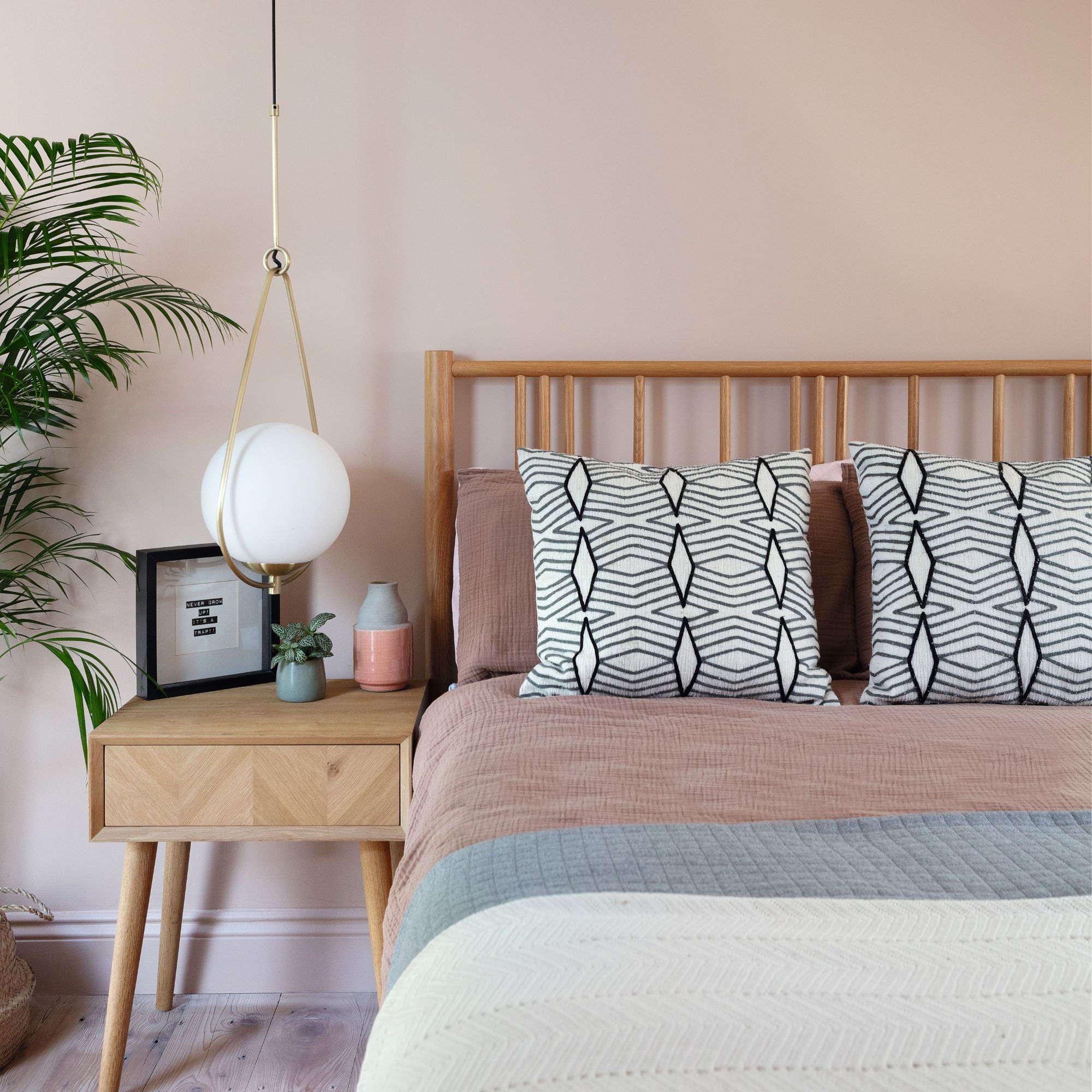
Let’s bust a myth: this idea isn’t about decorating your home like some kind of cheesy Valentine’s Day nightmare. It’s all about self-care and creating a home that’s optimised for your emotional wellbeing.
We often think about our homes purely in terms of functionality and practicality, or in terms of interior design trends. However, our homes play an important role in our mental health.
With these simple, feel-good ideas, you can make your home more about you and your emotional as well as physical comfort…
What does ‘romanticise your home’ mean?
Home-decor trends come and go, but this idea has longevity. There are two sides to ‘romanticising’ your home. One side is practical: to make your home look attractive, comfortable and interesting. The other is emotional: creating an interior that makes you feel uplifted, cared for and secure. Like being in the best kind of relationship… with yourself.
Your home isn’t just a place to lay your hat. Romanticising it can make it a place to heal, explore who you are and re-energise.
8 easy ways to romanticise your home
1. Declutter and streamline
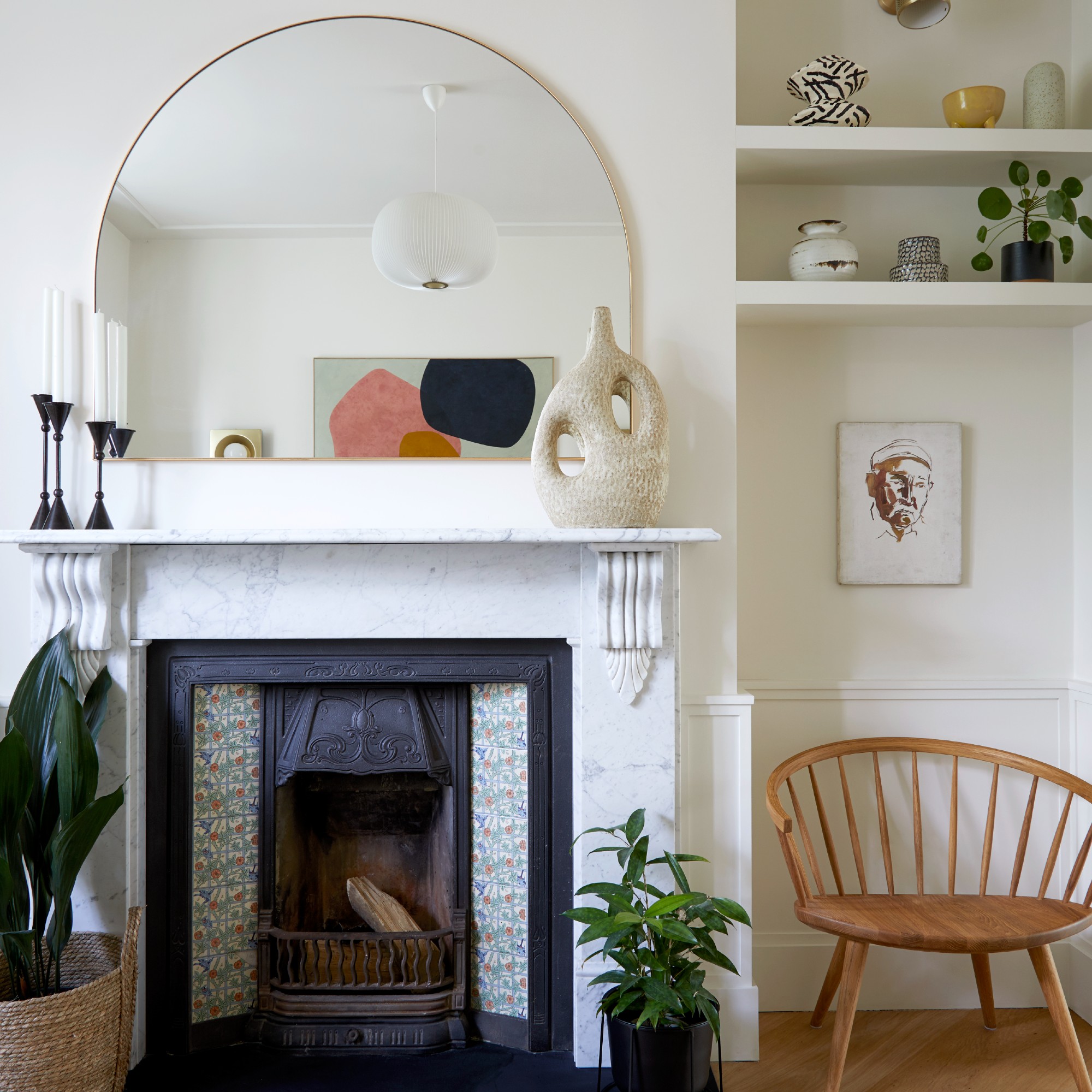
Clutter and chaos make a home harder to live in and breed frustration. No basis for a restful residence. Self-care starts with a session of mindful decluttering. ‘Decluttering is not merely a chore to be checked off our to-do list. As we discard items and curate our homes, we create more space and gain clarity as to who we truly are and how we actually want to live,' explains relationship counsellor Michaela Murphy.
‘As we sift through our belongings and discern what truly sparks joy, we confront the complexities of our inner world. We may unearth feelings of nostalgia, regret, longing and loss, as well as confront unresolved issues and emotional “baggage” that have accumulated over time. In this process, decluttering becomes a form of emotional catharsis, a release of blocked emotions and a step towards healing. Objects can act as gateways to powerful emotions.’
2. Display meaningful items
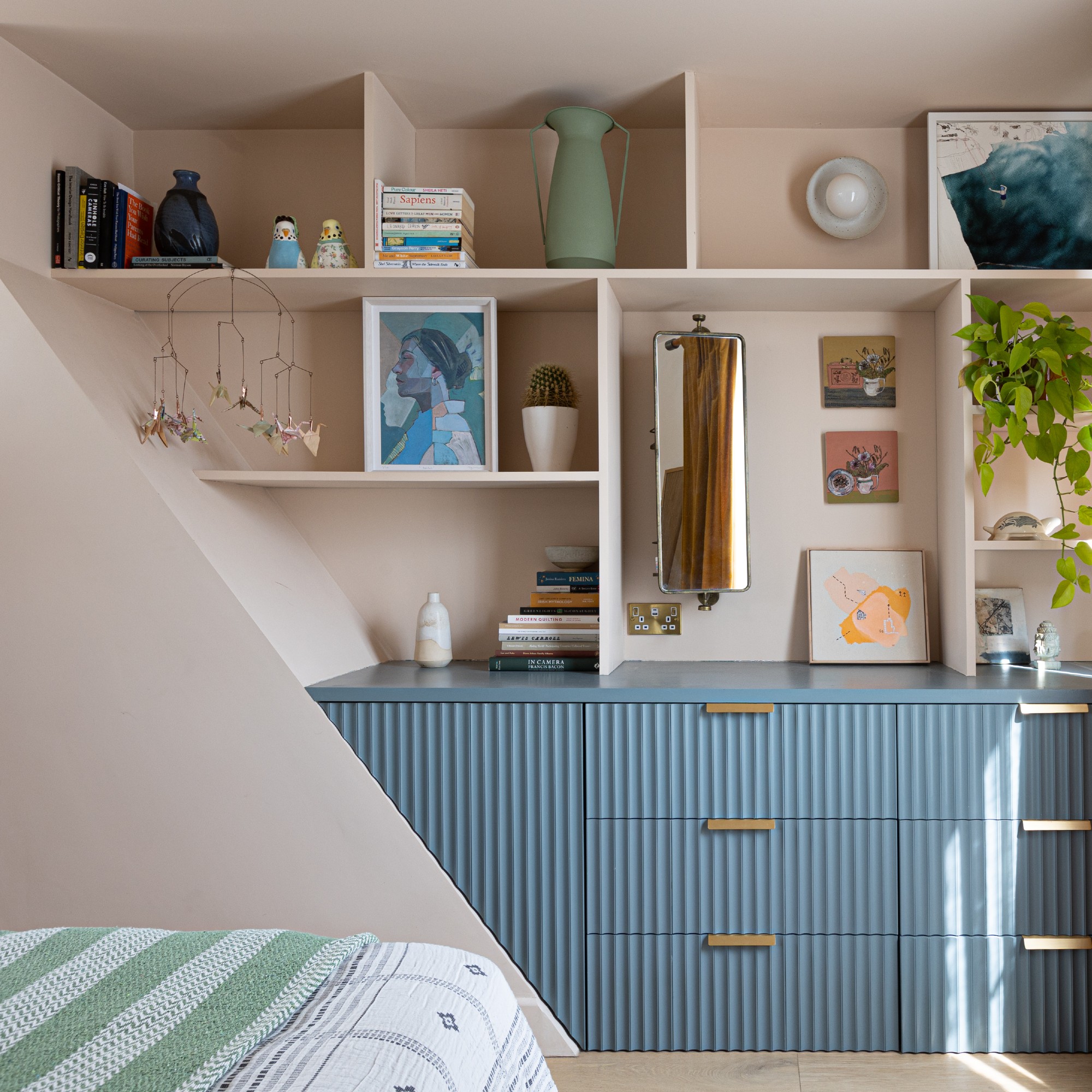
Forget trends and ‘aesthetics’ and prioritise items that trigger good vibes. Whether that’s photos of favourite people or memories, hand-made mementoes your kids have made from pasta and pipe cleaners, or vintage finds that give you the warm and fuzzies. Instead of keeping them packed away, put them on show.
This is Marie Kondo’s ‘does it spark joy?’ theory. Every item in our home has a story to tell, whether it's an irritatingly useless mop that induces cleaning-rage each time you use it, or a cherished orange coffee pot invoking memories of happier times,' says Michaela. 'By listening to these messages, we gain insight into our relationship with our belongings and can make more informed decisions about what to keep and what to let go of.’
3. Indulge your senses
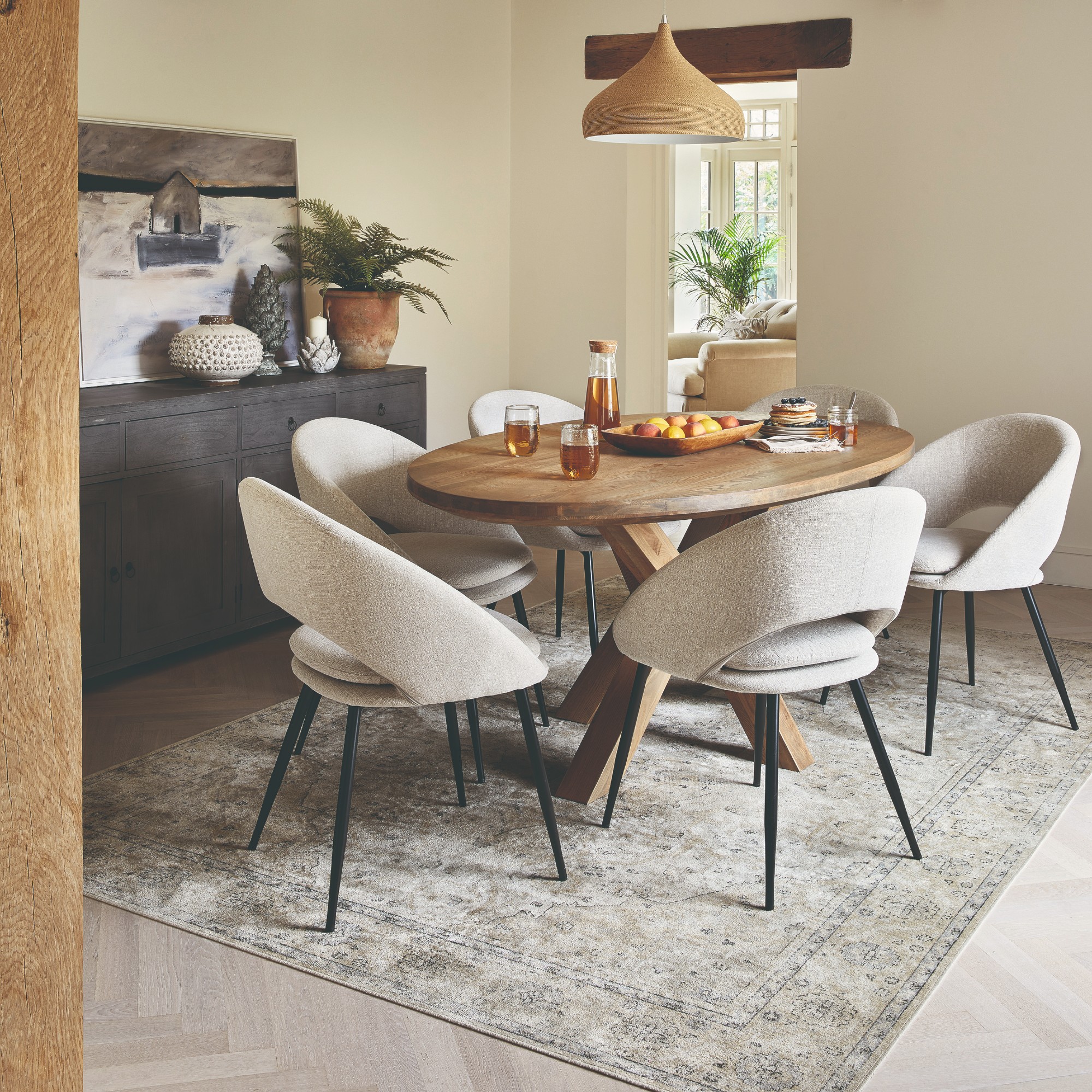
Making your home a 360˚ sensory experience can only heighten the pleasure of being in it. Trying sensory garden ideas is a great way to introduce soothing sound, smell and textures into your life, but it’s possible inside, too.
‘Sensory design is transformative — it’s about crafting a home that supports your needs and emotional wellbeing,' says Pippa Jameson, author of The Sensory Home. 'By paying attention to sensory elements like sound, smell, and texture, you can create a space that not only shifts your mood but also positively influences your behaviour, reducing stress, creating calm, and enhancing your overall quality of life.’
The first step to creating a sensory home is to deaden unwanted noise by soundproofing a room in order to enhance quietness – or your choice of music. ‘A lot of noise pollution in the home often goes unnoticed but can cause unconscious stress. Materials like glass tables or floors that reverberate sound are common culprits,' explains Pippa.
'For a quieter home, incorporate sound-absorbing elements like soft-close drawers, carpets and rugs, and acoustic panels to dampen sound. If noise from neighbours is an issue, try placing bookshelves filled with books against the offending wall, and consider extra underlay and layered rugs to reduce sound from below. Always choose ‘quiet’ mode appliances and use integrated models to create sound barriers.’
The next step is to make your home smell delicious. ‘Proper ventilation is key to reducing strong odours from cooking or waste. Incorporating natural scent diffusers like essential oils — lavender or eucalyptus — helps foster a calming environment while avoiding artificial fragrances that may overwhelm the senses.’
Lastly, make your home feel good at all times: ‘Natural materials, like wooden furniture, create a softer and warmer tactile experience compared to shiny synthetic surfaces. Choose breathable textiles that prioritise comfort for both physical and emotional wellbeing.’
4. Let nature take over
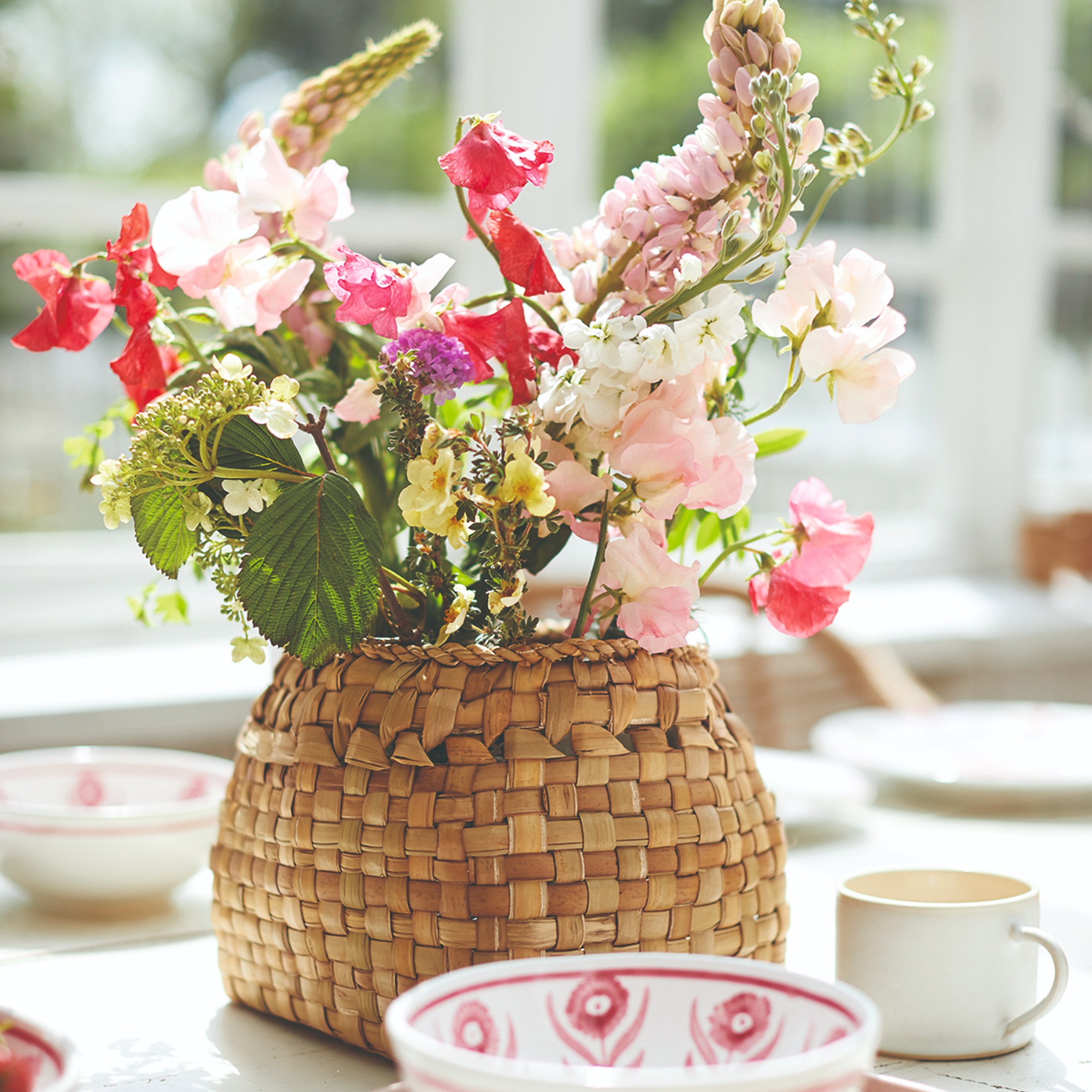
Make your home a route to reconnecting with nature, whether that’s through nurturing a garden or a collection of pot plants. Vasefuls of fresh flowers (the cheapest supermarket bunch is easily boosted with clippings of greenery). Even artwork and wallpaper with a natural design can help.
The Mental Health Foundation’s 2021 report, Nature: how connecting with nature benefits our mental health, states, ‘Research shows that people who are more connected with nature are usually happier in life and more likely to report feeling their lives are worthwhile. Nature can generate a multitude of positive emotions, such as calmness, joy, creativity and can facilitate concentration. Nature connectedness is also associated with lower levels of poor mental health; in particular lower depression and anxiety levels.’
5. Decorate with soothing pinks

Colour psychologists put soft, warm pinks at the top of the list of calm colour schemes. Michael Rolland, paint expert and managing director of The Paint Shed explains, ‘Thanks to their soft, understated tone, dusky pinks envelop a space in warmth without ever feeling overwhelming or overpowering.
‘These gentle hues are ideal for crafting a cosy and inviting atmosphere, perfect for intimate settings where relaxation is key. I love the use of softer pinks in bedrooms, reading nooks or any area where you seek to unwind and recharge.'
‘If it’s positive energy you need rather than soothing and relaxing, try a stronger shade,' continues Michael. ‘Bold pinks bring a burst of energy and excitement to any space. Be cautious, though. Unless the desired look is the Barbie Dreamhouse, they can be overwhelming and lead to an overly intense atmosphere. For the best effect, use these vibrant hues sparingly to add just the right touch of flair and excitement.’
6. Keep the lighting low key
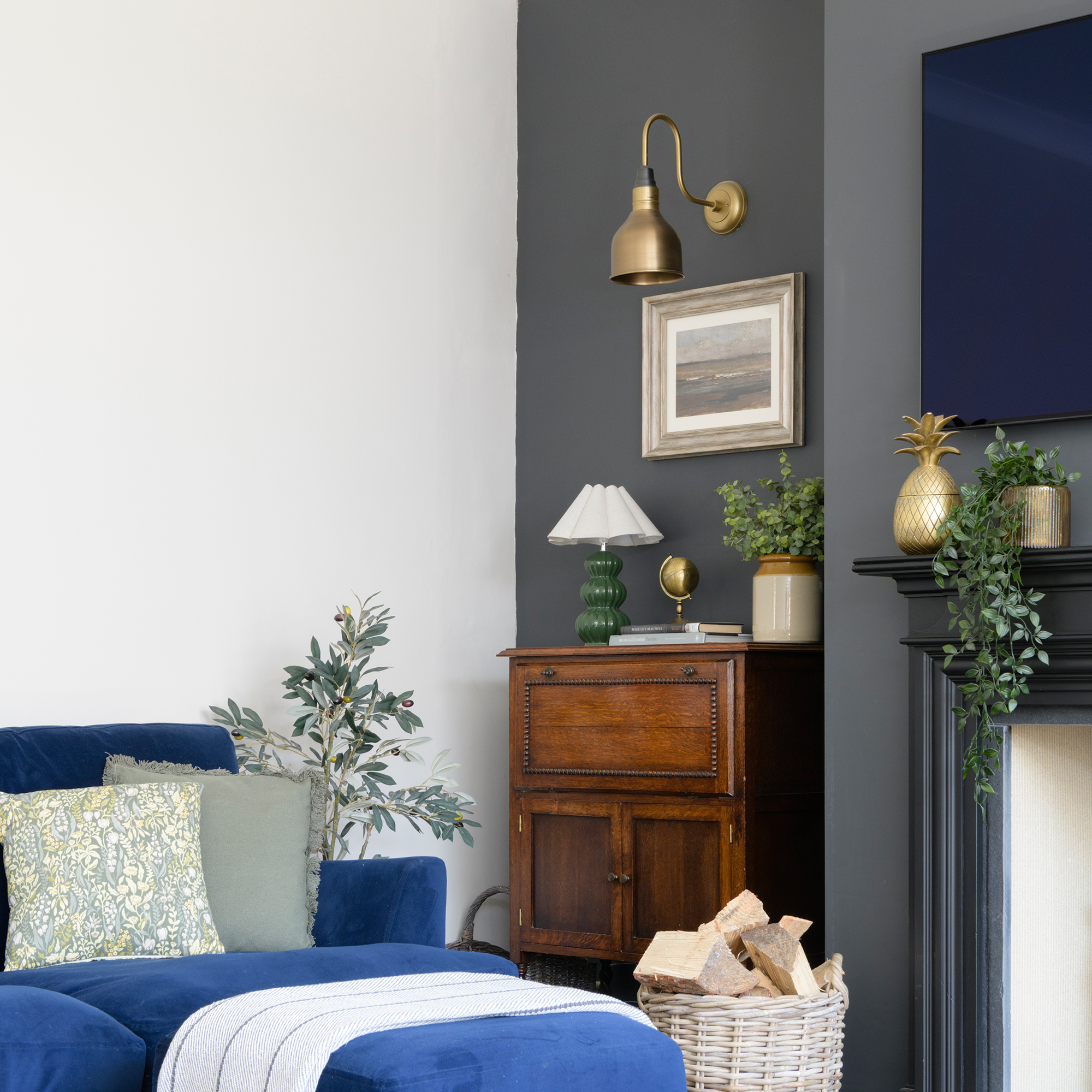
Dim lighting is ideal for a romantic night in and helps the brain to prepare for sleep. ‘Creating a calm and cosy home environment where we feel safe is key for a good night’s sleep,' explains Amy Cheseldine at The Good Sleep Method. 'Dimming the lights in the evening helps us feel sleepy as it promotes melatonin production.'
‘Low lighting also reduces visual stimulation which can be associated with decreased stress levels.’ Research at the University of Toronto, Canada, has even shown that low light reduces emotional intensity which can lead to smarter decision-making.
‘Bright light has an alerting influence on the central nervous system so dimming the lights helps activate our ‘rest and digest’ response,' continues Amy.
Check your light bulbs, too. ‘More warm or red toned lighting has a more relaxing effect than bright white or blue toned light,' Amy adds.
7. Add magic with sparkle and shine
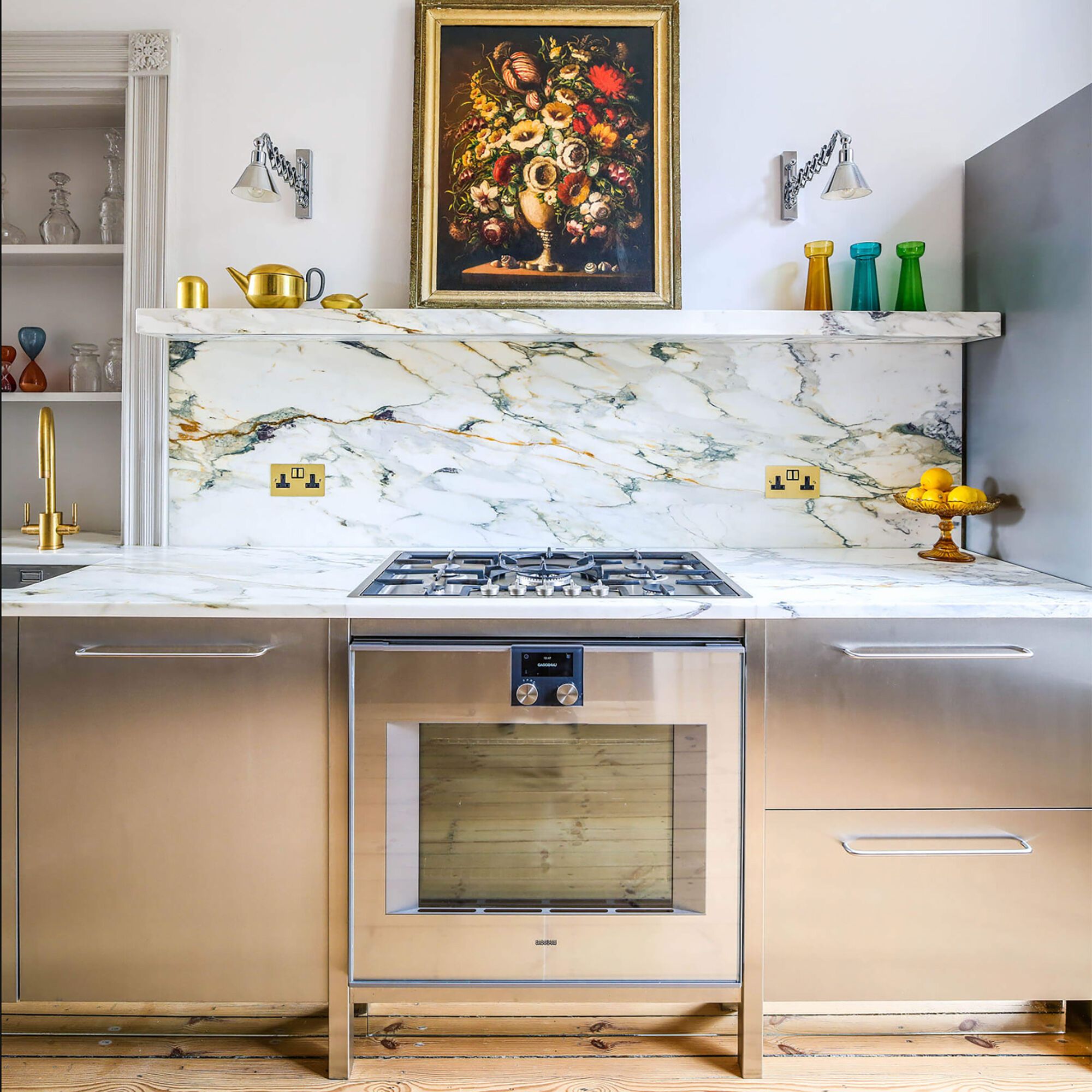
Mirrors, metals and shimmer will boost light levels… and your spirits. It’s also an opportunity to have a little fun, so put up a glitter ball for your kitchen disco or hang a totally extra crystal chandelier!
‘Romanticising your home means prioritising luxury as well as elevating the everyday, which is where adding some sparkle and shine come in,' advises interior stylist Laurie Davidson.
'Take time to choose quality materials for homeware, whether it's a decadent glass light fitting, reflective marble surface or even a metallic wallpaper – and don’t forget a luxurious candle or two to add a twinkly finishing touch.'
8. Soften your surroundings with curved shapes
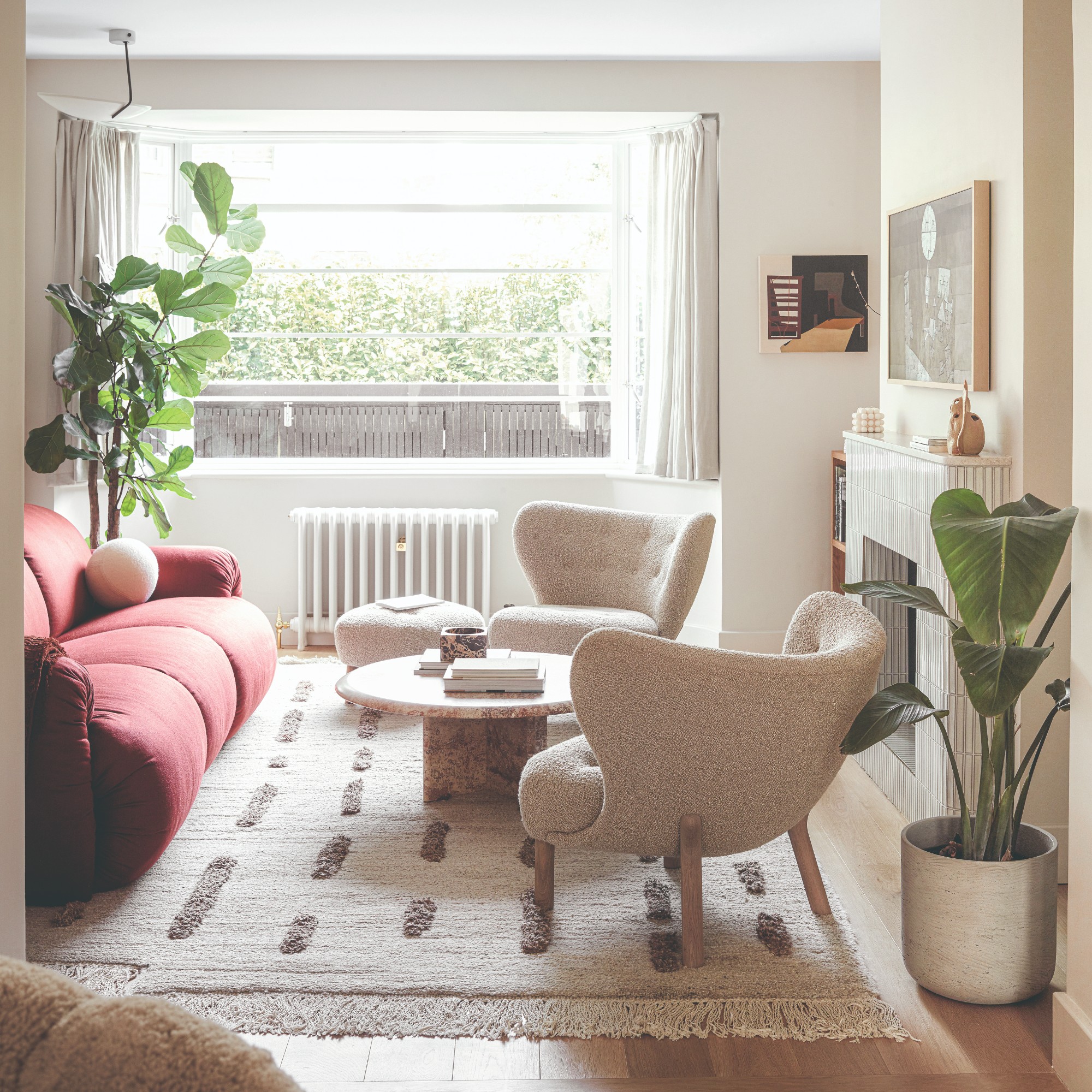
We tend to fill our homes with hard lines and sharp corners which can make it visually harsh. Go for a gentler aesthetic to soften the look with circular shapes and curved lines.
Danielle Le Vaillant, stylist and art director at Cox & Cox loves the trend for curvy sofas: ‘Sometimes also known as conversation sofas, the natural arch of a curved sofa brings those sitting at either end almost face to face, making them conducive to intimate chats – a romantic way to while away a cosy afternoon!
‘With a voluptuous form that is designed to be admired from all sides, a curved sofa is unashamedly decadent – like a roll-top bath in the centre of the room – they are a highly effective way to add drama and romance to a room.’
A great price for a curvy sofa, available in this pretty blue shade as well as a calm ivory tone.
Boasting a curvy shape and cosy boucle, this sofa ticks off more than one romantic element!
With a sleek, neutral colourway and deep wooden legs, this curvy piece adds timeless style.
Let your home love you back! You deserve a haven that makes you feel adored as soon as you step in the door. How will you choose to romanticise your home?







